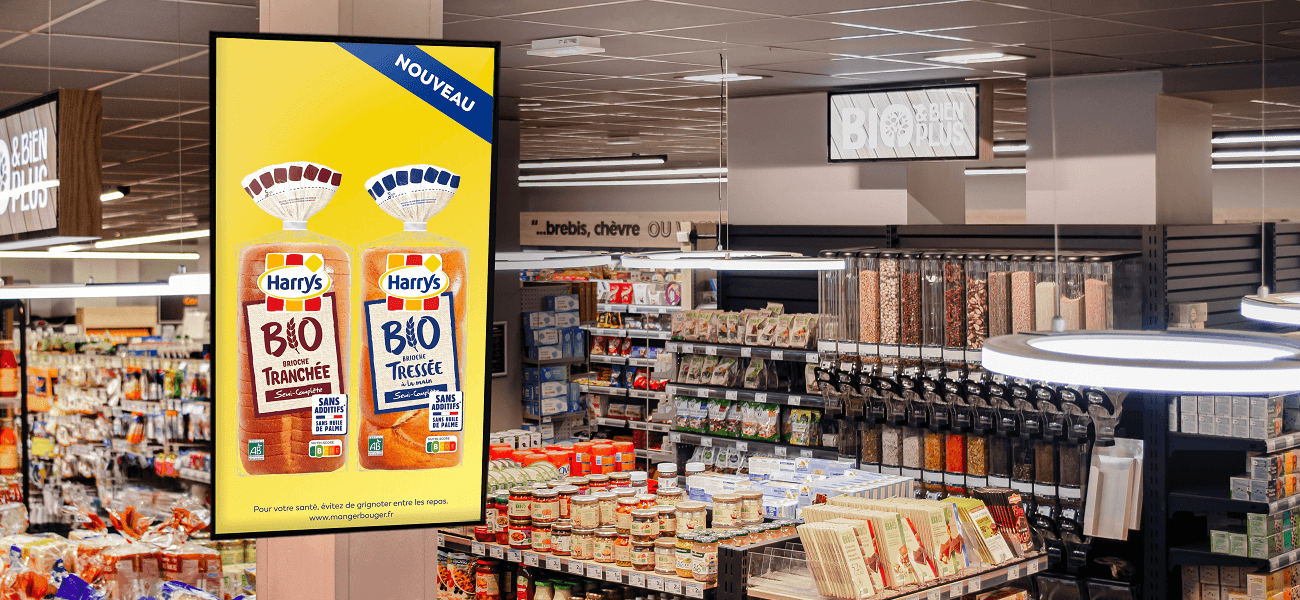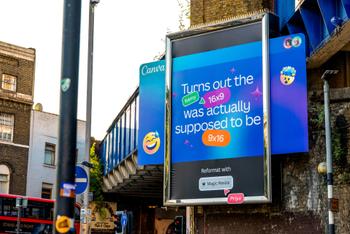Imagine you’re a brand looking to engage shoppers at the exact moment they’re considering a purchase — or a retailer eager to turn first-party shopper data into new revenue streams. Retail media networks (RMNs) make both possible.
So, what is an RMN exactly? A retail media network is an advertising platform that allows retailers to sell ad space across their owned media channels — both onsite, offsite, and in-store — to brands looking to reach high-intent shoppers. This includes everything from sponsored search ads on retailer websites and apps to in-store digital displays and point-of-sale promotions. By leveraging first-party data, retailers can provide precise targeting while unlocking new monetization opportunities. And brands gain a highly effective way to reach shoppers at the point of purchase with relevant, data-driven ads.
In this article, we’ll break down what retail media is, how retail media networks work, and why they matter for both retailers and advertisers.
Jump to:
- What is retail media?
- Why retail media networks matter: Benefits for retailers & advertisers
- How RMNs work (RMN ecosystem)
- Retail media ad formats & real-world examples
What is retail media? Understanding the bigger picture
While retail media and retail media networks (RMNs) are closely related, they aren’t the same thing.
Retail media = any advertising within a retailer’s ecosystem.
This includes in-store advertising methods like digital signage, in-store radio, and point-of-sale promotions, as well as online strategies such as sponsored product listings and display ads on retailer websites and apps.
Retail media networks (RMNs) = the monetization platform behind retail media.
A retail media network is the formal system that allows retailers to sell ad space to brands. RMNs provide the infrastructure, data, and ad inventory that make retail media possible.
Retail media vs. commerce media
Retail media is also part of a larger digital advertising movement known as commerce media. While retail media focuses on advertising within a retailer’s ecosystem, commerce media extends that approach across the entire digital commerce landscape.
📌 Why this matters:
Commerce media connects the full shopper journey — allowing brands to reach consumers before, during, and after their purchases. As the retail media space evolves, many retailers are expanding their offerings to become full commerce media platforms, helping brands engage with shoppers across multiple digital environments.
Why retail media networks matter (Key benefits for retailers & advertisers)
Retail media networks are changing how brands and retailers connect with shoppers, creating highly targeted, data-driven advertising opportunities at the point of purchase. As brands shift more of their ad spend to retail media — with global retail media ad spend projected to surpass US$177 billion in 2025 — RMNs are emerging as one of the fastest-growing segments in digital advertising.
This rapid growth is reshaping the relationship between retailers and advertisers, offering new ways to leverage privacy-compliant data, optimize ad reach, and influence purchasing decisions in real-time. Here’s why RMNs are becoming a must-have strategy for both in 2025:
For retailers: A win-win opportunity
Retail media isn’t just about ads — it’s about smarter, more profitable retail. Here’s how retailers benefit:
- Enhanced customer experience: Retail media doesn’t just benefit retailers and advertisers — it also improves the shopping journey for customers. Personalized promotions and targeted messaging shown on in-store displays help enhance the in-store retail experience, while well-placed online ads make it easier for shoppers to discover relevant products, access timely deals, and enjoy a more seamless path to purchase across both digital and physical retail environments.
- Increased basket sizes: Well-timed messaging can influence last-minute purchasing decisions, prompting shoppers to add more to their carts. Strategically placed product promotions near checkout highlight relevant add-ons, limited-time offers, and value packs that might have otherwise gone unnoticed. By seamlessly integrating these prompts into the shopping journey, retailers can increase average order value and maximize sales opportunities.
- New revenue streams: By selling ad space across their websites, apps, and in-store digital displays, retailers can generate high-margin advertising revenue — between 70% and 90%, according to BCG — alongside traditional product sales. Insights gleaned from their first-party shopper data make these (and any off-site) ad placements even more valuable, enabling brands to reach highly targeted audiences in a privacy-compliant way. As brands shift more ad spend to retail media, retailers that capitalize on this demand can drive significant new revenue while strengthening partnerships with advertisers.
READ ALSO: Learn how to influence add-to-cart moments with an in-store digital media channel, featuring strategies and key takeaways from our live webinar.
For brands: Reaching shoppers at the right moment
For advertisers, RMNs offer something digital ads often struggle with: direct access to ready-to-buy consumers. This allows brands to benefit from:
- Higher purchase intent: Ads appear when shoppers are actively looking for products, making them more effective and increasing the likelihood of conversion.
- Precision targeting with first-party data: RMNs provide privacy-compliant insights, helping brands serve more relevant ads and refine their audience strategies.
- Measurable ad performance: Unlike traditional ads, RMNs offer closed-loop measurement, so brands can track sales directly linked to their campaigns.
READ ALSO: Get a better understanding of why in-store signage advertising belongs in every brand’s retail media strategy
As RMNs continue to grow, they’re proving to be a must-have for both retailers and brands looking to maximize revenue, improve customer engagement, and drive measurable results.
How RMNs work: Key players & their roles (RMN ecosystem)
Retail media networks don’t operate in a vacuum. They rely on a collaborative ecosystem of key stakeholders — all working together to deliver relevant, data-driven advertising that benefits everyone involved. Here’s a quick overview of who’s involved and how RMN advertising works:
- Retailers create and manage the RMN, selling ad space across their digital and physical stores.
- Brands and advertisers purchase these placements to promote their products to high-intent shoppers at key moments in their purchase journey.
- Technology providers enable automation, measurement, and optimization to ensure seamless ad delivery and performance tracking via retail media platforms, ensuring ads reach the right audience at the right time.
Retail media ad formats & real-world examples
As RMNs grow, brands have more opportunities to connect with high-intent shoppers at key moments. Whether through in-store digital displays, sponsored search ads, or off-site campaigns, retail media offers targeted, data-driven advertising that enhances the shopping experience while driving measurable results.
Types of retail media advertising
Retail media comes in a variety of ad formats, depending on where shoppers interact with the brand:
1. Digital retail media (on-site advertising)
Retailers monetize their websites and apps much like traditional publishers, offering brands premium ad placements where shoppers actively search and browse.
Key digital retail media formats include:
- Sponsored search ads: Paid placements that appear when shoppers search for products.
- Display ads: Banner ads on a retailer’s website or app, either promoting their own products or paid for by external brands.
- Video ads: Short ads featured on product pages, retailer apps, or even live-streamed shopping events.
2. Off-site retail media (beyond retailer ecosystems)
Retailers extend ad reach beyond their owned properties, placing brand ads across third-party websites, social media, and programmatic networks — all powered by first-party shopper data.
Off-site retail media formats typically include:
- Social media & programmatic advertising: Retailers use shopper data to target ads on platforms like Instagram and YouTube.
- Retailer-driven display/video ads: Placed on external websites and apps but still leveraging retailer data.
For example, Target’s retail media network, Roundel, leverages the big-box retailer’s first-party shopper data to deliver highly targeted ads beyond Target’s owned properties. Brands can reach Target shoppers across third-party websites, social media, and programmatic networks, keeping engagement strong and driving traffic back to Target’s stores and digital channels.
📌 Key distinction from commerce media:
Off-site retail media is controlled and sold by a retailer — even though the ad appears elsewhere. Commerce media, on the other hand, is broader, allowing brands to use retailer data but not necessarily purchasing the ad space from the retailer itself.
3. In-store retail media
Forward-thinking retailers are transforming their physical stores into dynamic ad environments, giving brands the chance to engage shoppers and influence purchasing decisions at key moments in the buying journey.
Common in-store retail media formats include:
- Digital signage: Large-format screens, shelf-edge displays, or interactive kiosks showcasing promotions.
- In-store radio: Audio ads played over the store’s sound system.
- Point-of-sale ads: Offers displayed on checkout screens, receipts, and digital point-of-purchase (POP) displays.
Walmart’s in-store advertising solutions help brands stay top-of-mind by engaging shoppers at key moments in their journey. With a nationwide network of in-store TV screens, targeted self-checkout ads, and in-store audio placements, advertisers can seamlessly capture attention and drive influence where purchase decisions happen.
By integrating a strategic mix of retail media formats into their RMN, retailers can maximize advertising revenue while enhancing the customer shopping experience — whether online, in-store, or beyond. At the same time, brands gain valuable opportunities to stay top of mind and influence shoppers at key moments, from discovery to checkout.
READ ALSO: Learn how in-store and online retail media shape consumer shopping behavior and why multi-brand retailers can’t afford to overlook in-store digital marketing networks.

As RMNs evolve, proven out-of-home (OOH) strategies like audience targeting, engagement, and measurement are driving the future of retail media — particularly through retail digital signage solutions that enhance in-store engagement and ad impact.
By integrating these solutions into a broader RMN strategy, retailers can unlock new revenue streams, enhance the shopping journey, and maximize the value of their first-party data. At the same time, brands gain a powerful way to connect with high-intent shoppers at the point of purchase. From sponsored search and display ads to in-store digital activations, retail media offers a highly targeted and measurable advertising channel that’s only continuing to grow.
Want to make the most of your retail media strategy?
Explore our latest RMN insights and best practices for building, scaling, and maximizing the impact of a retail media network — whether you’re a retailer monetizing your media assets or a brand investing in RMNs.











